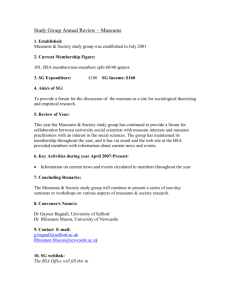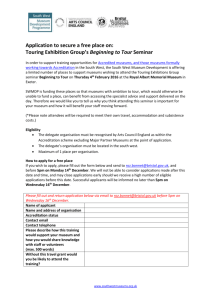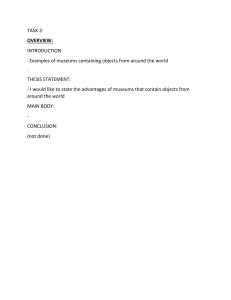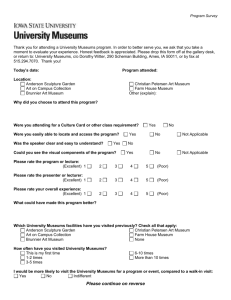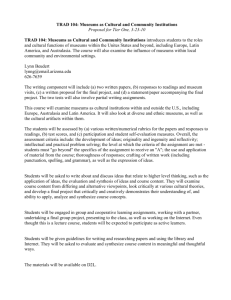Reading Summary
advertisement
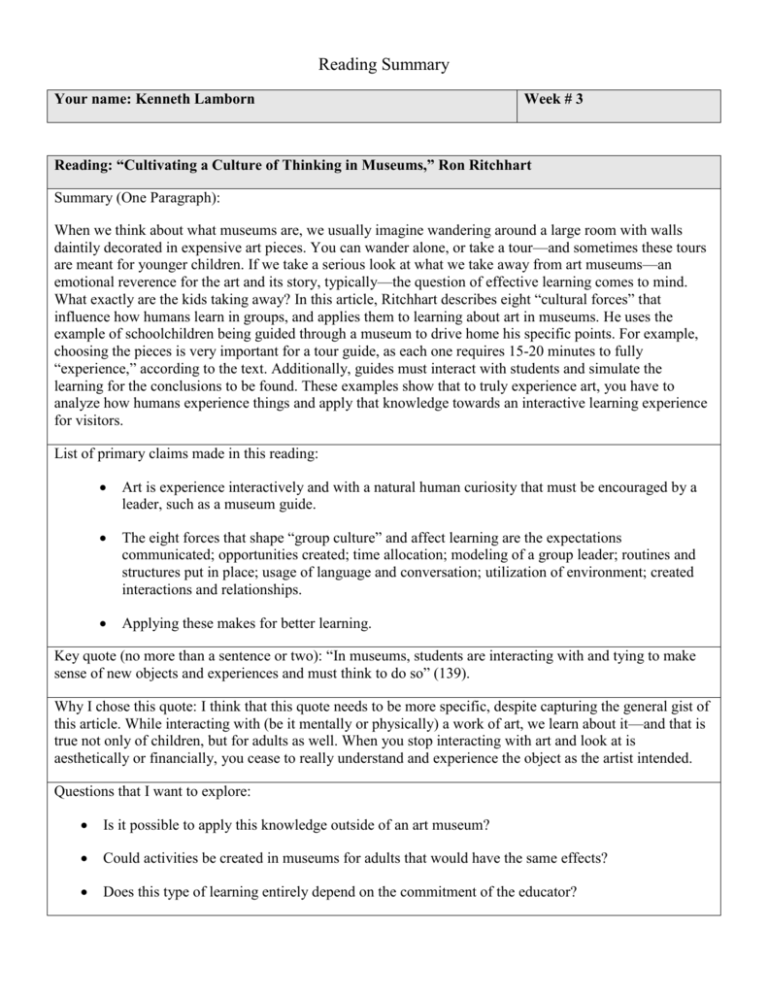
Reading Summary Your name: Kenneth Lamborn Week # 3 Reading: “Cultivating a Culture of Thinking in Museums,” Ron Ritchhart Summary (One Paragraph): When we think about what museums are, we usually imagine wandering around a large room with walls daintily decorated in expensive art pieces. You can wander alone, or take a tour—and sometimes these tours are meant for younger children. If we take a serious look at what we take away from art museums—an emotional reverence for the art and its story, typically—the question of effective learning comes to mind. What exactly are the kids taking away? In this article, Ritchhart describes eight “cultural forces” that influence how humans learn in groups, and applies them to learning about art in museums. He uses the example of schoolchildren being guided through a museum to drive home his specific points. For example, choosing the pieces is very important for a tour guide, as each one requires 15-20 minutes to fully “experience,” according to the text. Additionally, guides must interact with students and simulate the learning for the conclusions to be found. These examples show that to truly experience art, you have to analyze how humans experience things and apply that knowledge towards an interactive learning experience for visitors. List of primary claims made in this reading: Art is experience interactively and with a natural human curiosity that must be encouraged by a leader, such as a museum guide. The eight forces that shape “group culture” and affect learning are the expectations communicated; opportunities created; time allocation; modeling of a group leader; routines and structures put in place; usage of language and conversation; utilization of environment; created interactions and relationships. Applying these makes for better learning. Key quote (no more than a sentence or two): “In museums, students are interacting with and tying to make sense of new objects and experiences and must think to do so” (139). Why I chose this quote: I think that this quote needs to be more specific, despite capturing the general gist of this article. While interacting with (be it mentally or physically) a work of art, we learn about it—and that is true not only of children, but for adults as well. When you stop interacting with art and look at is aesthetically or financially, you cease to really understand and experience the object as the artist intended. Questions that I want to explore: Is it possible to apply this knowledge outside of an art museum? Could activities be created in museums for adults that would have the same effects? Does this type of learning entirely depend on the commitment of the educator?

